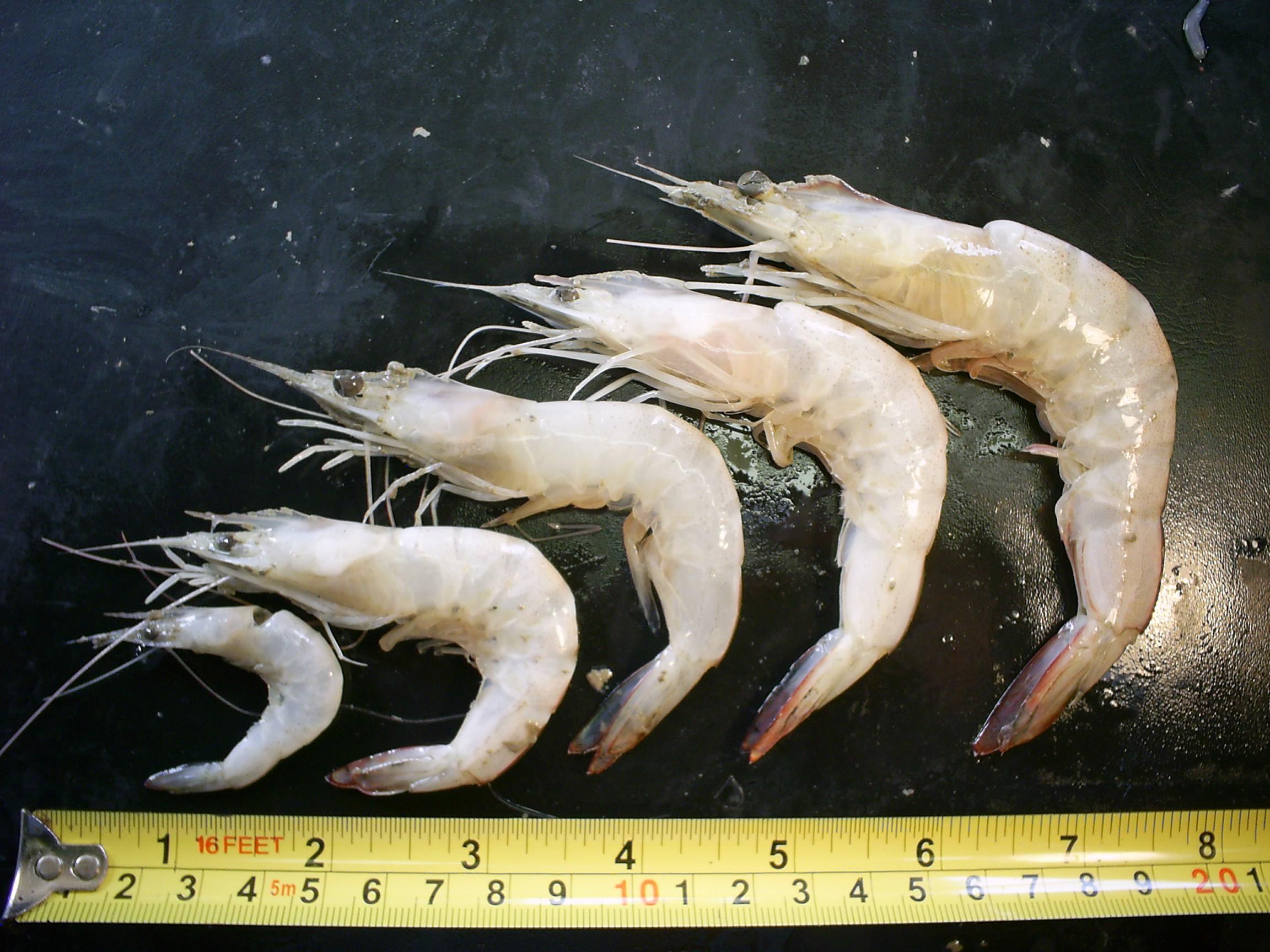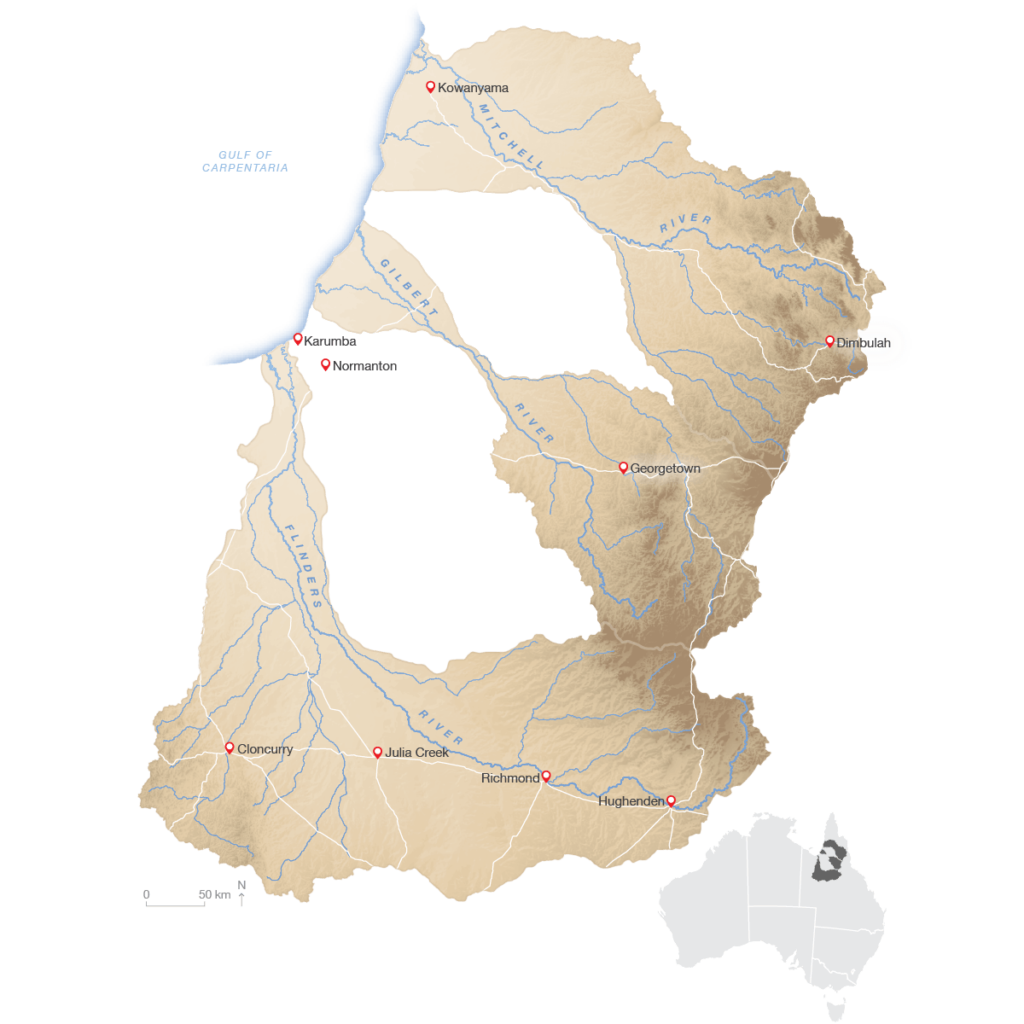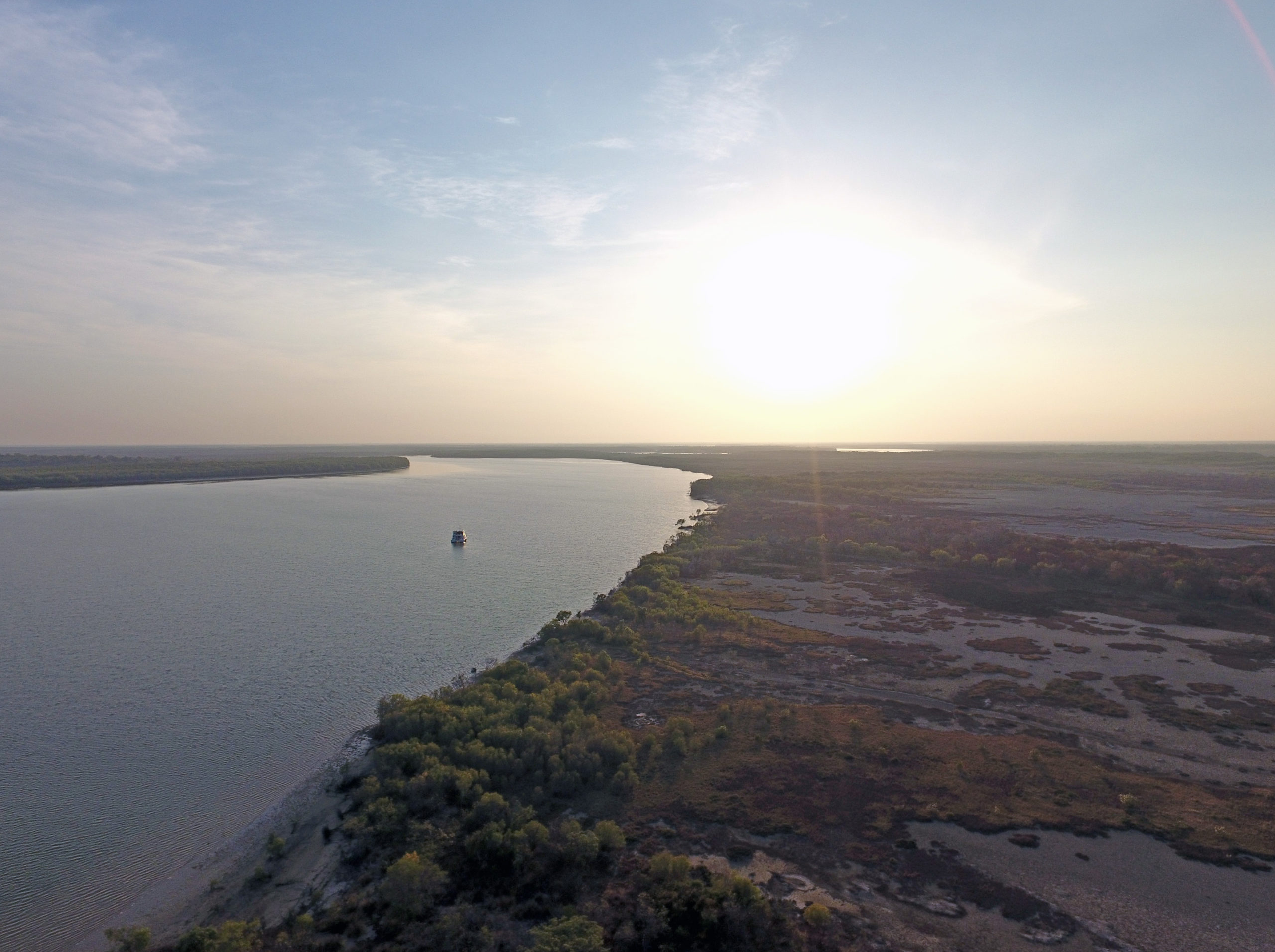1 March 2021
Authors: Dr Viki Cramer, Northern Australia Environmental Resources Hub, and Professor Michele Burford (project leader), Griffith University
In the Gulf of Carpentaria, big river flows lead to big harvests of Banana Prawns. Scientists seek to better understand this connection to balance the demand for water from irrigated agriculture with the long-term future of the Gulf’s prawn fishery.
Australia’s northern prawn fishery stretches across 6,000 km of coastline from the northern coast of Cape York in Queensland to the Kimberley in Western Australia. The fishery is one of Australia’s most valuable, worth $118 million in 2016–17. It is also one of our most sustainable, and was certified by the Marine Stewardship Council in 2012.

Banana prawns are a key prawn species fished in the Gulf of Carpentaria. Photo: Michele Burford.
The south-east corner of the Gulf of Carpentaria is the most productive region of the fishery. Here, the Flinders, Mitchell and Gilbert rivers, which have meandered for hundreds of kilometres through flat and largely undisturbed savanna landscapes, flow into their estuaries and eventually the Gulf.

The Flinders, Mitchell and Gilbert rivers flow into the Gulf of Carpentaria.
Banana Prawns – one of the key prawn species fished in the Gulf – arrive in the estuaries as post-larvae and then settle out and spend several months as juvenile prawns feeding on the mud in the shallow waters, before they mature and migrate into coastal waters where they spawn. Banana Prawns don’t survive long periods in freshwater so in the wet season, the freshwater flood flows push the prawns out into the deeper waters where they are caught in the prawn fishery.

Prawn trawlers in the Gulf of Carpentaria. Photo: Michele Burford.
Pressure to increase economic activity in the region has seen the Queensland Government release unallocated water for the development of irrigated agriculture in the Flinders and Gilbert river catchments.
Professor Michele Burford of Griffith University says that there’s a risk of taking too much water out of the system.
Then the Banana Prawn fishery will be affected, and they won’t be able to catch as many prawns as they did before.
– Professor Michele Burford, Project leader, Australian Rivers Institute (Griffith University)

Fieldwork in Gulf estuaries. Photo: Stephen Faggotter.
Research led by Professor Burford, and funded by the Australian Government’s National Environmental Science Program, seeks to give fisheries managers and water planners a better understanding of how water extraction for agriculture will affect the Banana Prawn catch in the Gulf. The research team has sampled Banana Prawns, mapped their habitat and investigated the growth of algae and the tiny shellfish and worms that prawns rely on for food.
The research has shown that the river systems vary a lot in their importance to the fishery from year to year, based on the density of prawns in each estuary.
We can’t generalise about which river is more important for the fishery. All of these estuaries are important.
– Professor Michele Burford
Want to know more about the Resilient Landscapes Hub's activities and our research into practical solutions to environmental problems? Stay informed about activities, research, publications, events and more through the Hub newsletter.
"*" indicates required fields